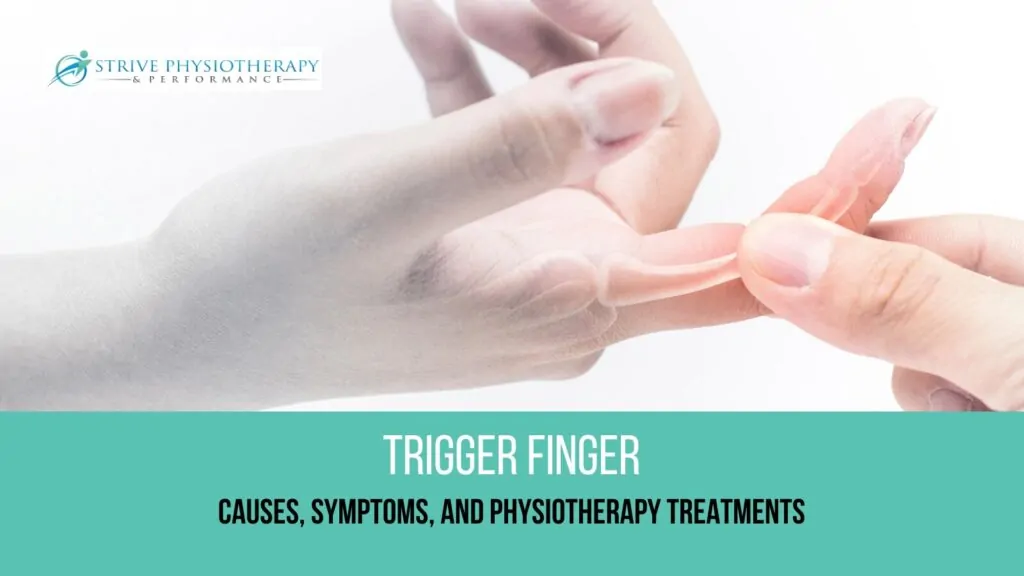
Today, trigger finger has started to be called something else as well… texting finger! It is an injury brought on by overuse.
What Is the Main Cause of Trigger Finger?
Trigger finger is an overuse injury where the long finger flexor tendons, tendon sheath, and ligaments get irritated and inflamed. We can even develop a thickening from the inflammation and scar tissue, called a nodule. This can lead to feelings of tightness and as it progresses may cause the finger to catch when bending or straightening your finger.
You may be able to force the finger straight, however, in more severe cases, you may feel that you have to use your other hand to force the finger to unlock. This catching happens because the finger tendon is getting stuck along its pathway that has been narrowed by the inflammation or the nodule.
Can Trigger Finger Be Cured With Physiotherapy?
Yes, Physiotherapy in Kitchener is a conservative treatment (non-surgical) that can resolve a trigger finger. The key with the trigger finger is to give the area time to rest and recover. This begins with using a splint for 6 weeks to immobilize the finger joint in order to prevent the catching/locking from happening. Additionally, we use gentle exercises to prevent stiffness and weakness of the joint and muscles, without triggering the catching.
Is It OK To Massage Trigger Finger?
Massage can feel good. It is okay to massage a trigger finger as long as we are not aggravating it. If you notice that it feels worse during or after a massage then you should consider decreasing the intensity of the massage. It is important to keep in mind that splinting and exercise are going to be the crux of the conservative rehab process for a trigger finger.
Is Heat or Ice Better for Trigger Finger?
Heat tends to feel good with a trigger finger as it may alleviate pain, as well as, the feelings of tightness.
How Long Does Trigger Finger Take To Heal?
With a conservative treatment plan, a splint can resolve a trigger finger in 6-weeks. If no progress is seen with splinting, heat, and exercises, then the next step is to chat with your family doctor about getting corticosteroid injections.
The last resort if conservative treatment options, including steroid injections, are not effective is surgery. This is something you would discuss with your family doctor to get a referral to a specialist.
Key Takeaways
Whether your finger hurts from being on a phone too much, or from being on a trigger, physiotherapy can help you get back to your day-to-day activities pain-free. Strive Physiotherapy & Performance offers personalized treatment plans for a wide range of common conditions.
Call us at 519-895-2020 today to book your physiotherapy assessment and take the first step toward an improved quality of life.